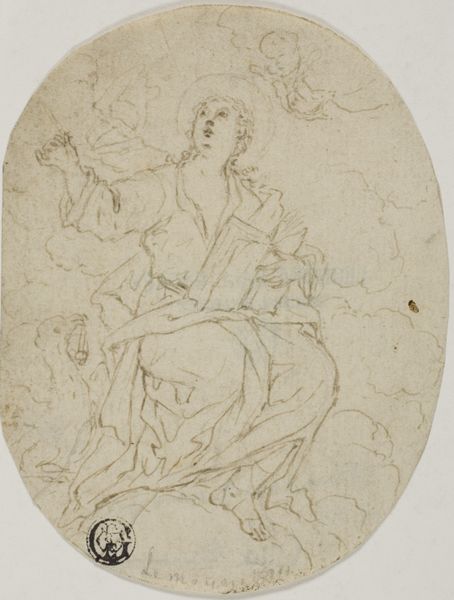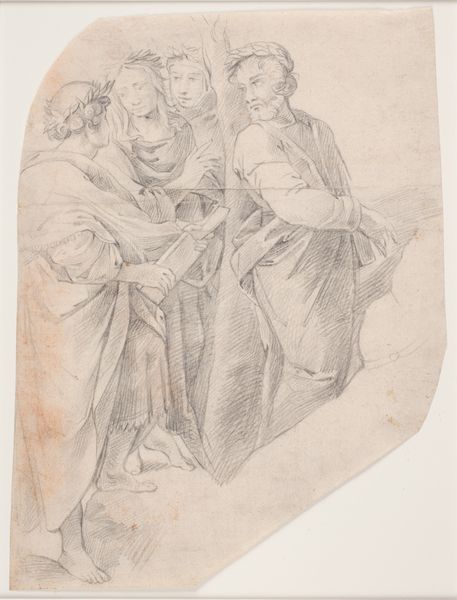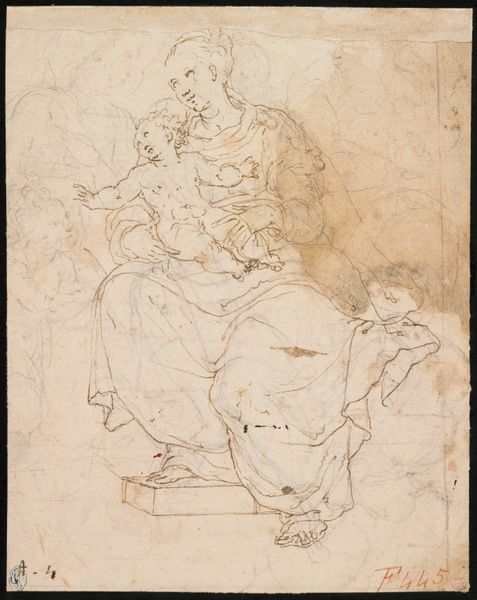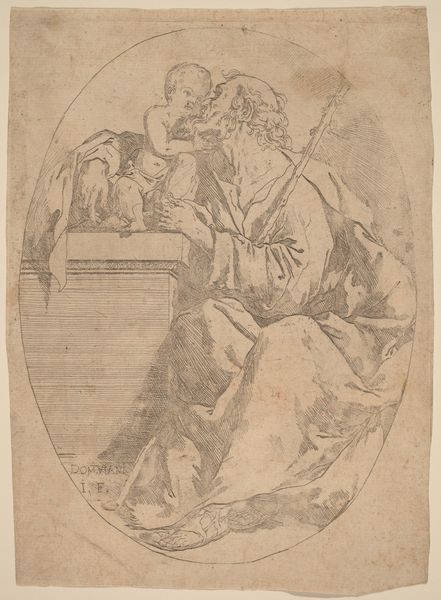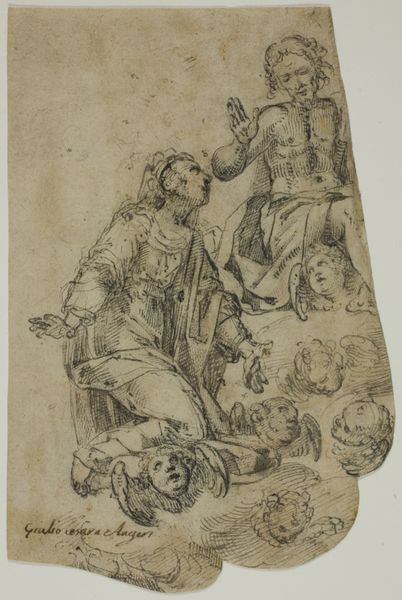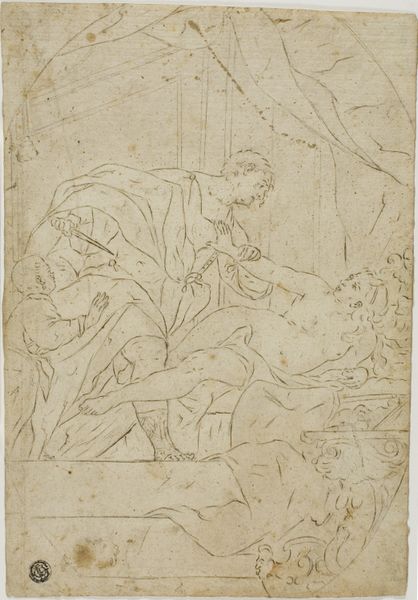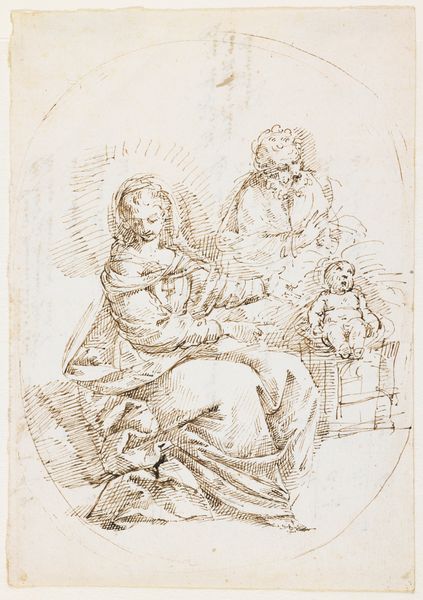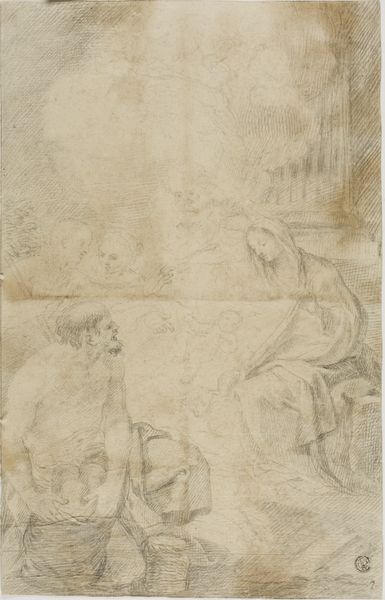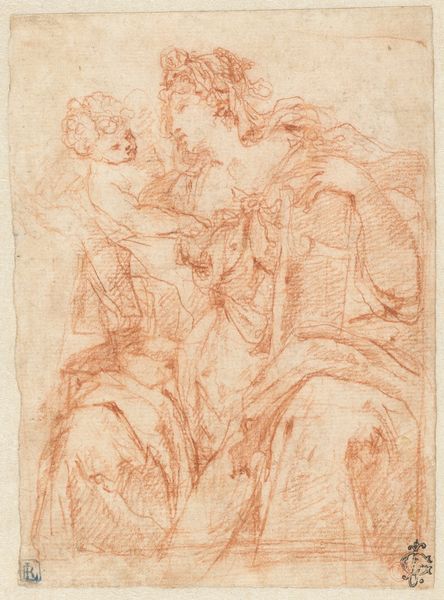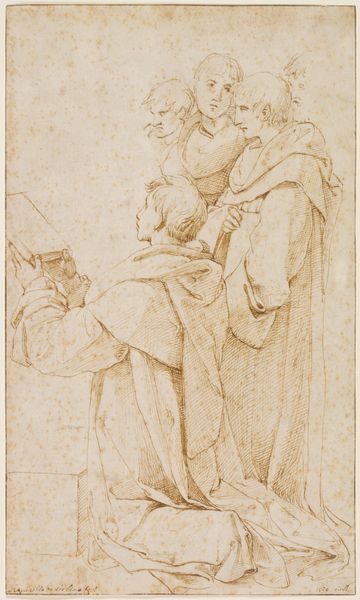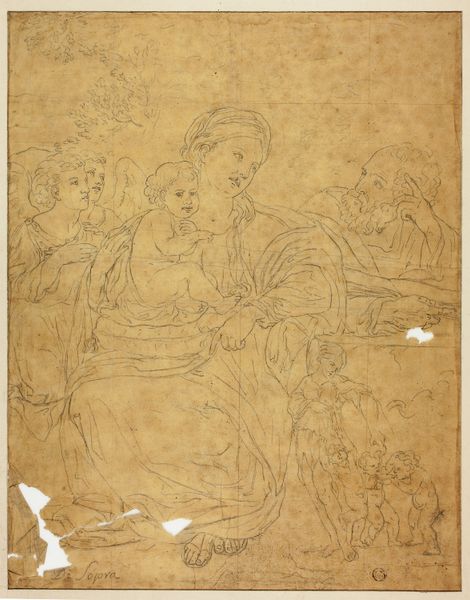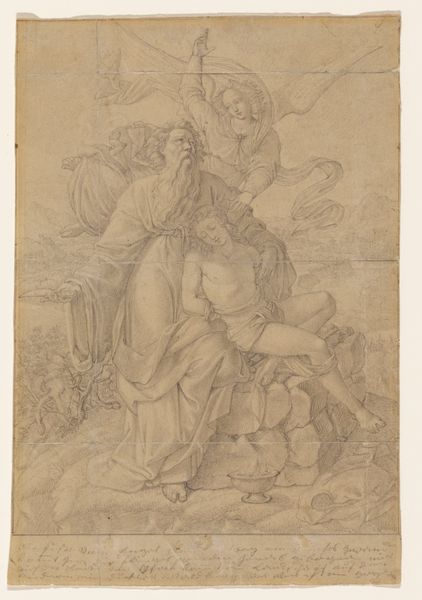
drawing, print, paper, ink, pencil, chalk, pen, black-chalk
#
portrait
#
drawing
#
narrative-art
#
ink painting
# print
#
pencil sketch
#
charcoal drawing
#
paper
#
ink
#
underpainting
#
pencil
#
chalk
#
pen
#
academic-art
#
black-chalk
#
miniature
#
watercolor
Dimensions: 125 × 97 mm
Copyright: Public Domain
Editor: So, here we have François Le Moyne’s “Saint Luke Painting the Madonna and Child," a drawing of undetermined date. It's made with a combination of ink, chalk, and pencil on paper. The oval composition and delicate lines give it quite an ethereal, dreamlike quality. What do you see in this piece beyond the obvious subject matter? Curator: Beyond the immediate representation, I see a powerful assertion of artistic agency, wouldn’t you agree? Here we have Saint Luke, not just passively recording a divine image, but actively constructing it, isn’t it? The male artist is creating an image of female perfection, effectively controlling the narrative around women and motherhood within a patriarchal religious framework. Editor: That's an interesting perspective. So, you're saying this isn't just about religious devotion but about power dynamics? Curator: Absolutely. Consider how the visual language reinforces this. Luke is grounded, solid, while Mary and Jesus appear almost as visions, literally creations of his artistic process. Isn't the very act of creation itself a form of dominion here? How might the piece speak to larger socio-political issues concerning artistic authority and representation? Editor: I hadn't thought about it that way, focusing on that perspective changes the tone completely. I guess, at first glance, it just looks like a devotional piece, right? But unpacking the layers of artistic agency is far more intriguing and provocative. Curator: Precisely! It is crucial to remember that devotional art can be analyzed under various contexts – as powerful tools that uphold social, political and cultural ideologies. We must always ask *who* benefits from an image being circulated widely. What previously invisible elements or points came to the surface in our analysis? Editor: Definitely, seeing the artist’s power in shaping the Madonna's image offers a much deeper, thought-provoking take than just accepting the surface narrative. Curator: Agreed. It serves as a reminder that art isn't a passive reflection but an active participant in shaping cultural norms and power structures, right?
Comments
No comments
Be the first to comment and join the conversation on the ultimate creative platform.
